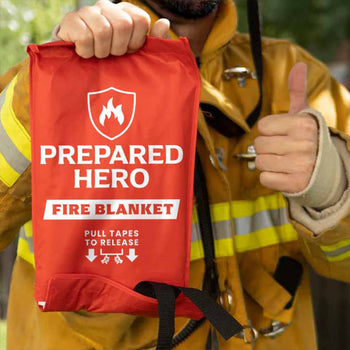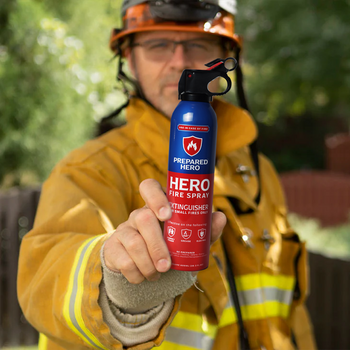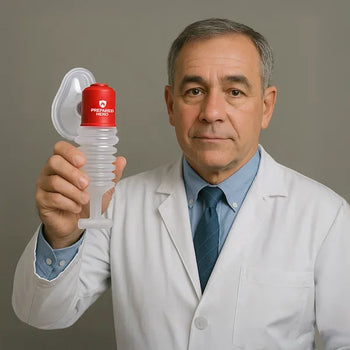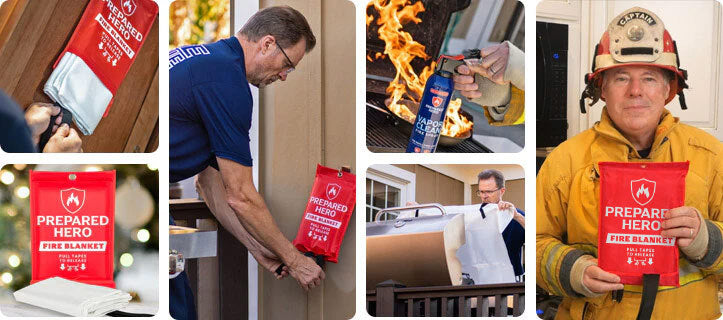Where you put your smoke detectors matters just as much as installing them. Proper placement makes sure they can detect...
According to the NFPA (National Fire Protection Association), fire departments respond to an average of 346,800 home fires each year. While that number has constantly decreased since the 1970s, home fires still put families at risk.
While they all burn, fires don’t burn down your house the same way. So, experts classified fires based on what causes them.
Knowing the different types of fire allows you to put them out the right way. In this post, we’ll talk about the different types of fire, what causes them, and how you can put them out.
Why You Need to Be Familiar With Fire Classes

Fire classes describe the cause of the fire, how quickly it burns, and how dangerous it is. Hence, knowing the fire class will tell you how to put it out.
Knowing the different types of fire also helps you pick the right fire extinguisher type to use. Fire extinguishers work differently, so you should know what fire classes each one puts out.
Here’s a chart summarizing the different types of fire extinguishers and the fire classes they put out:
| Water | Water Mist | Wet Chemical | Powder | Foam | Carbon Dioxide | |
| Class A | ✅ | ✅ | ✅ | ✅ | ✅ | ❌ |
| Class B | ❌ | ✅ | ❌ | ✅ | ✅ | ✅ |
| Class C | ❌ | ✅ | ❌ | ✅ | ❌ | ❌ |
| Class D | ❌ | ❌ | ❌ | ✅ | ❌ | ❌ |
| Class F | ❌ | ❌ | ✅ | ❌ | ❌ | ❌ |
| Electrical | ❌ | ✅ | ❌ | ✅ | ❌ | ✅ |
Different Types of Fire

Here are the different fire classes and how to put them out:
1. Class A Fire
Class A fires are the most common type of fire. Solid materials such as paper, wood, plastic, or clothing cause them. Technically, you start a Class A fire when lighting a match or starting a bonfire. In this case, the fire is intentional, so it won’t likely cause damage. On the other hand, an accidental Class A fire includes knocking over a candle or leaving burning trash unattended. Unintentional Class A fires cause damage.
Class A fires can start in many ways, including everyday activities. For instance, having clutter at home can start a Class A fire. Think about the piles of magazines, storage boxes, or clothes lying around. A Class A fire can occur if a candle tips over or a spark from an outlet lands on the said piles.
Weather changes also contribute to the occurrence of Class A fires. During dry months, leaves and grass can catch fire quickly, especially if people throw burning cigarettes or matches on the ground.
Contrary to popular belief, Class A fires are dangerous. For one, these fires spread fast, especially if there are many flammable items around. Once the fire starts, it can quickly consume nearby furniture, drapes, and decor. The smoke from Class A fires can also be toxic and quickly fill a room. This poses a risk to anyone inside the house or building.
Class A fires usually occur in homes. For instance, a fireplace ember lands on an old couch with a fabric cover. The fabric catches fire, which can quickly spread to the throw pillow, curtains, and wall outlets.
How to Put Out a Class A Fire
Fortunately, you can put out Class A fires using Class A fire extinguishers. These extinguishers are usually made of water, water mist, wet chemical, powder, and foam. Hence, class A fires are the easiest to put out.
However, experts recommend using a water or foam fire extinguisher on a Class A fire. If you don’t have a fire extinguisher at home, you can use a fire spray or water to put out the fire.
Class A Fire Extinguisher Alternatives
While fire extinguishers help a lot, they can be expensive, heavy, and hard to store. They might also contain toxic chemicals and leave a mess that’s hard to clean up.
A fire spray is an easy-to-use, lightweight, and affordable alternative to Class A fire extinguishers. Prepared Hero’s fire spray is also biodegradable and non-toxic. Unlike a fire extinguisher, you can safely use it around your family and pets.
Here’s a table summarizing the differences between Prepared Hero’s fire spray and a regular Class A fire extinguisher:
| Prepared Hero’s Fire Spray | Regular Class A Fire Extinguisher |
| Lightweight, easy to carry | Heavy, hard to carry |
| Easy to store | Needs more space for storage |
| 100% biodegradable | Mostly made of non-biodegradable materials |
| Non-toxic | Toxic |
| Easy to clean | Hard to clean |
| Safe for kids and pets | Not safe for kids and pets |
Another alternative is a fire blanket, which depletes the fire’s oxygen supply. By doing this, it puts out small Class A fires in seconds. It also doesn’t leave a mess because it simply covers the fire.
Unlike fire extinguishers, Prepared Hero’s fire blanket doesn’t expire. You can reuse it as many times as you want as long as it’s not damaged. Plus, you can use it to save someone on fire.
Here’s a table summarizing the differences between Prepared Hero’s fire blanket and a regular Class A fire extinguisher:
| Prepared Hero’s Fire Blanket | Regular Class A Fire Extinguisher |
| Lightweight, easy to carry | Heavy, hard to carry |
| Affordable | Expensive |
| Doesn’t expire | Expires |
| Easy to store | Needs more space for storage |
| Non-toxic | Toxic |
| Doesn’t leave a mess | Leaves a mess |
| Safe for kids and pets | Not safe for kids and pets |
| Can be used on humans | Can’t be sprayed on humans |
2. Class B Fire
Flammable liquids and gases (e.g., alcohol, paint, petroleum grease) cause Class B fires. However, this type of fire doesn’t involve cooking oils or regular grease. There’s a different fire class for that, which we’ll talk about later.
Common flammable liquids include cleaning products, lubricants, paint thinner, alcohol, gasoline, and ethanol. Meanwhile, common flammable gases include propane, butane, and methane.
A Class B fire can start in many ways, including spills and leaks. For instance, if gasoline spills on the ground and someone accidentally strikes a match, it can instantly ignite. Similarly, many flammable liquids produce vapors that can be dangerous. If these vapors build up in a poorly ventilated, closed space and come into contact with a heat source, they can start a fire. Improper storage of flammable liquids can also trigger Class B fires. Storing them near heat sources, like stoves or space heaters, poses a higher fire risk.
In addition, Class B fires are dangerous because they can spread fast and produce intense heat. Once it starts, a small flame can become a major fire in seconds. For instance, a Class B fire that starts in a detached garage filled with gasoline can engulf the whole house in minutes. The fire can also produce poisonous fumes, especially if it burns toxic materials along the way.
How to Put Out a Class B Fire
Water can spread flammable liquids, so you should never use a water extinguisher on a Class B fire.
Instead, you should use a Class B fire extinguisher. It’s usually made of water mist, foam, powder, or carbon dioxide. They work by cutting off the fire's oxygen supply. However, experts mostly recommend using foam fire extinguishers because they cut off the oxygen supply and smother the flames.
Class B Fire Extinguisher Alternatives
While Class B fire extinguishers help a lot, they can be expensive, heavy, and hard to store. They might also contain toxic chemicals and leave a mess that’s hard to clean up.
A fire spray is an easy-to-use, lightweight, and affordable alternative to Class B fire extinguishers. Prepared Hero’s fire spray is also biodegradable and non-toxic. Unlike a fire extinguisher, you can safely use it around your family and pets.
Here’s a table summarizing the differences between Prepared Hero’s fire spray and a regular Class B fire extinguisher:
| Prepared Hero’s Fire Spray | Regular Class B Fire Extinguisher |
| Lightweight, easy to carry | Heavy, hard to carry |
| Easy to store | Needs more space for storage |
| 100% biodegradable | Mostly made of non-biodegradable materials |
| Non-toxic | Toxic |
| Easy to clean | Hard to clean |
| Safe for kids and pets | Not safe for kids and pets |
Another alternative is a fire blanket, which depletes the fire’s oxygen supply. By doing this, it puts out small Class B fires in seconds. It also doesn’t leave a mess because it simply covers the fire.
Unlike fire extinguishers, Prepared Hero’s fire blanket doesn’t expire. You can reuse it as many times as you want as long as it’s not damaged. Plus, you can use it to save someone on fire.
Here’s a table summarizing the differences between Prepared Hero’s fire blanket and a regular Class B fire extinguisher:
| Prepared Hero’s Fire Blanket | Regular Class B Fire Extinguisher |
| Lightweight, easy to carry | Heavy, hard to carry |
| Affordable | Expensive |
| Doesn’t expire | Expires |
| Easy to store | Needs more space for storage |
| Non-toxic | Toxic |
| Doesn’t leave a mess | Leaves a mess |
| Safe for kids and pets | Not safe for kids and pets |
| Can be used on humans | Can’t be sprayed on humans |
3. Class C Fire
The Occupational Safety and Health Administration (OSHA) defines Class C fires as fires involving energized electrical equipment. As long as the electrical equipment is connected to a live power source, the Class C fire can continue. The fire will continue damaging other equipment and spreading to other areas until the power is turned off.
What makes Class C fires dangerous is how fast they spread. Once the electrical equipment catches fire, it can quickly spread to other areas or explode. Contrary to popular belief, they’re not limited to homes.
Class C fires can also start in industrial settings and even outdoors. Since many wires are hidden behind walls, people may not notice the fire until it’s too late. This makes Class C fires hard to detect since being behind walls or ceilings gives them more time to grow and cause more damage before someone can respond.
In addition, electrical fires can lead to explosions, which can cause injuries, property damage, and death. How quickly these fires grow also leaves little time for people to escape, which increases the risk of injury and death. Once a Class C fire starts, it can spread quickly because wires are connected all over a house or building. If the fire isn’t contained or the power source isn’t shut off, the fire will continue to burn and consume everything in its path.
How to Put Out a Class C Fire
Turn off the power supply first. Then, use a Class C fire extinguisher to put out the fire. Remember, this is the only type you should use because the others can make Class C fires worse. Powder, water mist, and carbon dioxide extinguishers are Class C fire extinguishers.
Remember, water doesn’t help. It’s a good conductor of electricity, so water extinguishers can electrocute the person trying to put it out.
Class C Fire Extinguisher Alternative
While Class C fire extinguishers put out electrical fires quickly, they can be expensive, heavy, bulky, and hard to store. They might also contain toxic chemicals and leave residues that are hard to clean up.
A great alternative is a fire blanket, which removes the fire’s oxygen supply. By doing this, it puts out small Class C fires in seconds. It also doesn’t leave a mess because it just covers the fire.
Unlike fire extinguishers, Prepared Hero’s fire blanket doesn’t expire. You can reuse it as many times as you want as long as it’s not damaged. Plus, you can use it to save someone on fire.
Here’s a table summarizing the differences between Prepared Hero’s fire blanket and a regular Class C fire extinguisher:
| Prepared Hero’s Fire Blanket | Regular Class C Fire Extinguisher |
| Lightweight, easy to carry | Heavy, hard to carry |
| Affordable | Expensive |
| Doesn’t expire | Expires |
| Easy to store | Needs more space for storage |
| Non-toxic | Toxic |
| Doesn’t leave a mess | Leaves a mess |
| Safe for kids and pets | Not safe for kids and pets |
| Can be used on humans | Can’t be sprayed on humans |
4. Class D Fire
Metals cause Class D fires. However, you need extremely high temperatures to ignite metals. Hence, Class D fires are the least of your worries at home.
Class D fires usually start when metal shavings, metal dust, or molten metal come into contact with heat sources, sparks, or open flames. For instance, processes in factories can create sparks that ignite metal shavings. When combustible metals like lithium and titanium are involved, things can escalate quickly.
Class D fires typically occur in industrial settings where metals are processed or stored. These include factories, foundries, recycling centers, and welding shops. While it’s less common for Class D fires to occur than other fire types, anyone working in these industries has to know the risks.
The impacts of Class D fires can be severe. For one, they can cause serious burns, respiratory complications, and permanent injuries. Class D fires can also cause financial burdens. Think about the property damage, loss of production time, lawsuits, and expensive rebuilding costs. If a business has to shut down because of a Class D fire, the financial impact can be devastating. Insurance may cover some costs, but the remaining expenses might bankrupt the company.
How to Put Out a Class D Fire
You can only use Class D fire extinguishers (dry powder extinguishers) to put out Class D fires. They work by separating the fuel from oxygen or reducing heat. Foam or water extinguishers can increase the flames and lead to explosions, so you shouldn't use them on Class D fires.
Class D Fire Extinguisher Alternatives
While Class D fire extinguishers put out metal fires quickly, they are expensive, heavy, bulky, and hard to store. They might also contain toxic chemicals and leave residues that are hard to clean up. Please take note that you can only use the alternatives below if the metal’s ignition temperature is lower than what the fire spray or fire blanket can withstand.
A fire spray is an easy-to-use, lightweight, and affordable alternative to Class D fire extinguishers. Prepared Hero’s fire spray is also biodegradable and non-toxic. Unlike a fire extinguisher, you can safely use it around your family and pets.
Here’s a table summarizing the differences between Prepared Hero’s fire spray and a regular Class D fire extinguisher:
| Prepared Hero’s Fire Spray | Regular Class D Fire Extinguisher |
| Lightweight, easy to carry | Heavy, hard to carry |
| Easy to store | Needs more space for storage |
| 100% biodegradable | Mostly made of non-biodegradable materials |
| Non-toxic | Toxic |
| Easy to clean | Hard to clean |
| Safe for kids and pets | Not safe for kids and pets |
Another alternative is a fire blanket, which removes the fire’s oxygen supply. By doing this, it puts out small Class D fires. It also doesn’t leave a mess because it just covers the fire.
Unlike fire extinguishers, Prepared Hero’s fire blanket doesn’t expire. You can reuse it as many times as you want as long as it’s not damaged. Plus, you can use it to save someone on fire.
Here’s a table summarizing the differences between Prepared Hero’s fire blanket and a regular Class D fire extinguisher:
| Prepared Hero’s Fire Blanket | Regular Class D Fire Extinguisher |
| Lightweight, easy to carry | Heavy, hard to carry |
| Affordable | Expensive |
| Doesn’t expire | Expires |
| Easy to store | Needs more space for storage |
| Non-toxic | Toxic |
| Doesn’t leave a mess | Leaves a mess |
| Safe for kids and pets | Not safe for kids and pets |
| Can be used on humans | Can’t be sprayed on humans |
5. Class K Fire
Vegetable oil, fat, or grease causes Class K fires. Also known as grease fires, this type of fire is common in commercial and home kitchens. They can also quickly spread in a house, making them difficult to manage.
Vegetable oil (the most common type of cooking oil) can ignite at high temperatures, with flashpoints ranging from 410°F (210°C) to 633°F (334°C). Once ignited, these oils can produce intense heat and spread quickly. It can become worse if there are other fire hazards in your kitchen.
The effects of Class K fires can be devastating. For example, inhaling smoke from a grease fire can result in respiratory issues or make pre-existing conditions worse. Oil is also extremely hot, so it can cause severe burns. In the worst cases, Class K fires can cause permanent injuries or death.
In addition, Class K fires can cause financial problems. Think about the medical bills, repair costs, employee downtime, and rebuilding expenses. While fire insurance can cover some of the costs, you still have to pay out of pocket for expenses not included in your policy.
How to Put Out a Class K Fire
You can only use Class K fire extinguishers (wet chemical fire extinguishers) to put out Class K fires. These extinguishers layer the oil and seal it. As a result, they quench the flames and prevent the fire from reigniting.
Using a fire extinguisher not meant for grease fires can lead to a much bigger fire or explosions. Contrary to popular belief, you should never use water to put out a grease fire. It’s because water and oil don’t mix. You see, water is denser than oil. When you throw water into a pan or pot of oil, it goes under it. The water then reaches the scorching surface and quickly turns into steam.
When water turns into steam, its volume expands up to 1,600 times. This sudden expansion can splash the burning oil. This quickly spreads the fire to areas beyond your kitchen.
For these reasons, Class K fire extinguishers are made of wet chemicals. The extinguishing agent is usually made of potassium acetate, potassium carbonate, potassium citrate, or a combination of the said chemicals.
Class K Fire Extinguisher Alternatives
While grease fire extinguishers help a lot, they can be expensive, heavy, and hard to store. They might also contain irritating chemicals and leave a mess that’s hard to clean up.
A fire spray is an easy-to-use, lightweight, and affordable alternative to Class K fire extinguishers. Prepared Hero’s fire spray is also biodegradable and non-toxic. Unlike a fire extinguisher, you can safely use it around your family and pets.
Here’s a table summarizing the differences between Prepared Hero’s fire spray and a regular Class K fire extinguisher:
| Prepared Hero’s Fire Spray | Regular Class K Fire Extinguisher |
| Lightweight, easy to carry | Heavy, hard to carry |
| Easy to store | Needs more space for storage |
| 100% biodegradable | Mostly made of non-biodegradable materials |
| Non-toxic | Toxic |
| Easy to clean | Hard to clean |
| Safe for kids and pets | Not safe for kids and pets |
Another alternative is a fire blanket, which depletes the fire’s oxygen supply. By doing this, it puts out small grease fires in seconds. It also doesn’t leave a mess because it simply covers the fire.
Unlike grease fire extinguishers, Prepared Hero’s fire blanket doesn’t expire. You can reuse it as many times as you want as long as it’s not damaged. Plus, you can use it to save someone on fire.
Here’s a table summarizing the differences between Prepared Hero’s fire blanket and a regular grease fire extinguisher:
| Prepared Hero’s Fire Blanket | Regular Class K Fire Extinguisher |
| Lightweight, easy to carry | Heavy, hard to carry |
| Affordable | Expensive |
| Doesn’t expire | Expires |
| Easy to store | Needs more space for storage |
| Non-toxic | Toxic |
| Doesn’t leave a mess | Leaves a mess |
| Safe for kids and pets | Not safe for kids and pets |
| Can be used on humans | Can’t be sprayed on humans |
How to Use a Fire Extinguisher to Put Out Different Types of Fire

Fire extinguishers have different instructions for use. However, you likely won't have time to read them when a fire breaks out.
In this case, you can use the PASS fire extinguisher method, which stands for pass, aim, squeeze, and sweep.
1. Pull
First, pull the pin from the fire extinguisher. The tamper seal will break once you remove the pin.
2. Aim
Next, aim the nozzle at the base of the fire. Don’t aim it at the flames.
3. Squeeze
Slowly squeeze the handle until the fire extinguisher works.
4. Sweep
Lastly, sweep the nozzle from side to side at the base of the fire. Continue doing this until you put out the fire. If the fire reignites, repeat steps two to four.
What to Do When You Can’t Extinguish a Fire

The Department of Homeland Security states that a small flame can become a big fire in just 30 seconds.
So if you don’t know how to use a fire extinguisher or the fire’s too big to put out, leave your house or building as quickly as possible. At the same time, shout to inform people nearby about the fire.
If you live in a building with an elevator, don’t use it. Instead, use the stairs and stay low to the ground.
You should also use the back of your hand to touch closed doors. If they feel warm, don’t open them. Next, call 911 or your local emergency number as soon as it’s safe.
If your clothes catch on fire, stop, drop, and roll.
1. Stop
Stop running when your clothes catch fire. Running will supply more oxygen to the fire and make your clothes burn faster.
2. Drop
Drop to the floor and lie down. Doing so will stop the flames from moving up your body and burning your face and head.
3. Roll
After lying down, put your hands over your face. Roll back and forth to put out the flames. If someone else is with you, they can use a fire blanket to put out the flames.
Conclusion
Fires can injure and kill people. They can also destroy your home. Hence, preventing fires is the best way to keep your family and home safe.
A fire protection kit, emergency fire blankets, fire sprays, and flame shields help you stay safe. Do you want reliable, easy-to-use, and affordable tools to put out small fires before they spread? Check out Prepared Hero’s fire prevention tools here, and get up to 51% off on certain items. Stay prepared, hero!


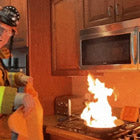 Fire
Fire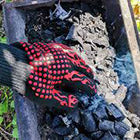 Safety
Safety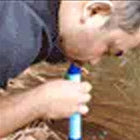 Survival
Survival Protection
Protection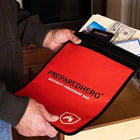 New
New
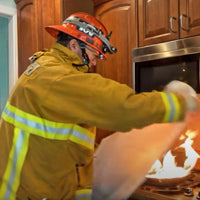 Fire
Fire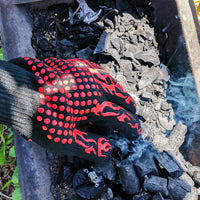 Safety
Safety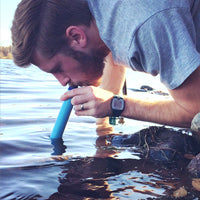 Survival
Survival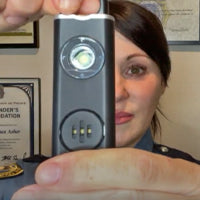 Protection
Protection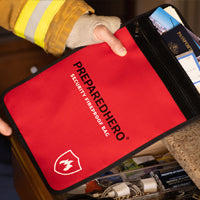 New
New
